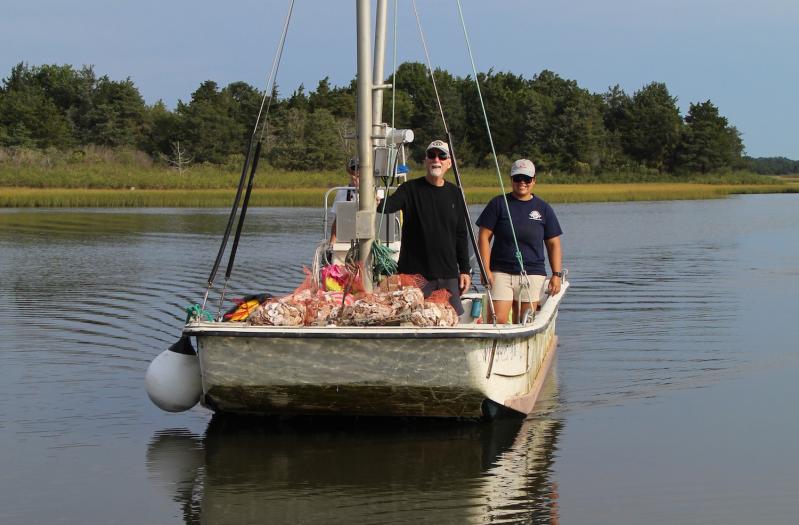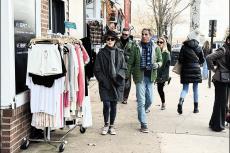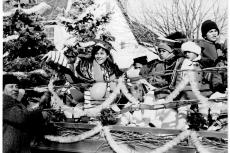“Oysters do a fantastic job of filtering our water,” Bob Tymann of South Fork Sea Farmers explained to the Sag Harbor Village Board last week while displaying a slide showing algae, nitrogen, and other contaminants entering an oyster and coming out clean. The bivalves are like mini wastewater treatment plants, each adult filters 50 gallons a day.
Representatives of South Fork Sea Farmers and the East Hampton Town Shellfish Hatchery were at the meeting to pitch the village on a new oyster reef in the bay waters off Havens Beach. With approximately 100,000 oysters encompassing a reef, they can make “a dent” in improving water quality.
Dr. Tymann, the head of the education committee for South Fork Sea Farmers, said the goal of the reef would be both to improve water quality and create habitat for other species in the bay. The groups have installed oyster gardens in Three Mile Harbor, Accabonac Harbor, Napeague Harbor, Hog Creek in Springs, and in Lake Montauk.
They need a permit from the village before they can move forward with a permit from the New York State Department of Environmental Conservation, a process that could take up to a year, they told the board.
Extolling the virtues of oyster reefs, Dr. Tymann told the board that a one-acre reef could filter up to 36 Olympic-size swimming pools of water daily.
The proposed reef would be much smaller than an acre, just two yards wide and about 24 yards long. Biodegradable bags, made by 3D printers with potato starch, would run the base of the breakwater jetty and not pose a threat to navigation or moorings. Robert Bori, the village harbormaster, was supportive, according to Dr. Tymann. The weight of the bags, full of oyster shells, keep them in place during storms. “As more oysters grow, they interlock,” said Dr. Tymann.
“Being that far out from Havens Beach, how much is that going to impact the water quality there?” asked Mayor Tom Gardella.
“This one reef isn’t going to make a significant impact on the whole bay, even if we put it right next to the beach,” admitted Dr. Tymann. “This reef is a pilot. It’s the beginning of a process. You need multiple reefs, all different places to start having a real impact on water quality.”
“Our waters are impaired but there’s still a lot of life out there,” said John (Barley) Dunne, a bay management specialist in the town’s shellfish hatchery. “Whether the oysters recruit on the reef or not, they’re still going to create habitat.” He said the conditions off Havens Beach are optimal for oysters.
Oysters begin to spawn when the water temperature crests the 68-degree mark, creating a soup of sperm and eggs which meet up in the water to begin the fertilization process. The fertilized eggs float for a couple of weeks, eating phytoplankton, and are spread by water currents. Eventually they settle on a hard bottom and grow a “foot,” which helps them search for something to attach to, ideally another oyster shell. When they find the shell, they’re only the size of a grain of sand, and called spat. That’s when shell generation begins. They can grow an inch a year, and spawn after a year. By three years, they’re full adults.
“How long does an oyster live for?” asked Aidan Corish, a village trustee.
“These oysters will live 10 to 20 years,” said Dr. Dunne.
The hope is that as the oysters mature, they spawn and more oysters begin to make the breakwater their home, so the reef becomes self-perpetuating. Dr. Tymann said the fact that wild oysters already use the breakwater shows that it’s a good site.
“These are the trees of the bay,” said Mr. Dunne. Just as people plant trees but can’t measure exactly how much they improve air quality, with oysters, he said, “We know it’s beneficial, although it may not be highly measurable.”
“Is there a downside?” asked Mr. Corish.
“Worst case scenario, you have a pile of shells at the bottom of the bay,” said Dr. Tymann.
“I said from the very beginning of my administration that water quality is an important issue for me,” Mayor Gardella said in a follow-up phone call. “This is a step that could help our waters in the harbor, and anytime there’s a chance to do that, we should show support and have outreach to these organizations. We don’t want to sit back and let things deteriorate. In the past, people said they supported water quality initiatives, but there hasn’t been a proactive approach.”
He also cited the Round Pond shoreline restoration project, which he helped to nurture, as another way the village was working to improve water quality.




